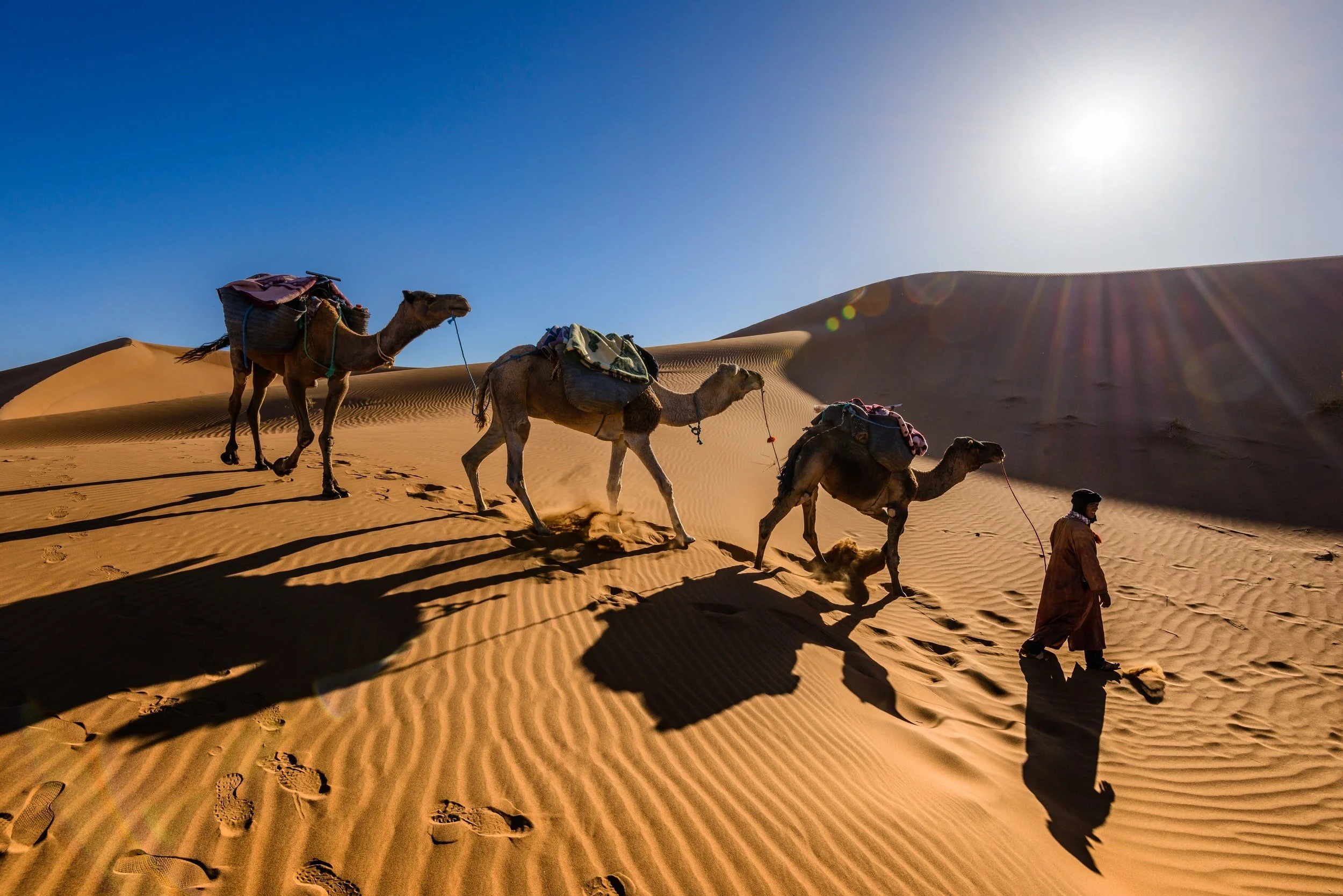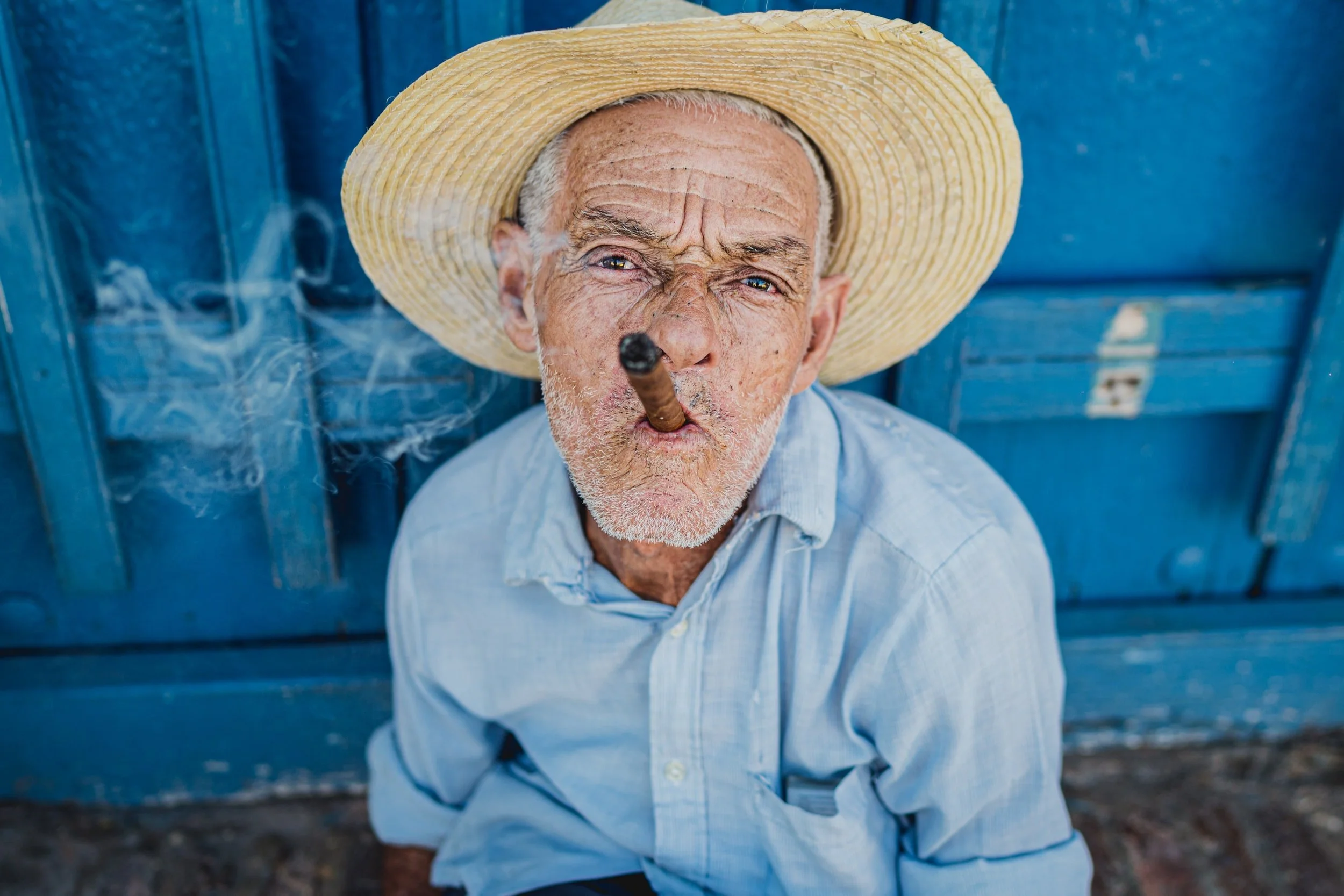Morocco Destination Guide
From camels crossing Saharan dunes to rugged Berber villages in the High Atlas mountains, Morocco offers travel romance in spades. Morocco is the gateway to Africa and provides many travellers with their heady first experience of that enthralling continent. There are plenty of ways to get pleasantly lost here, whether exploring the labyrinthine souks of Marrakech and Fes or walking the whitewashed, fortified towns of the wild Atlantic coast. Your abiding impression though is likely to be the warmly hospitable people, who love to share their culture and their cooking.
Language: Modern Standard Arabic and Amazingh, or Berber, are the official languages. In the street people speak Darija, or Moroccan Arabic. French and English are quite widely spoken.
Currency: The Moroccan Dirham. Euros can generally be used for larger transactions, as can English (though not Scottish or Irish) pound notes. Dirham can’t be easily exchanged or taken out of the country, so spend them before you go.
Getting To Morocco:
There are major airports at Marrakech, Fes, Casablanca, Tangier, Rabat and Agadir. If you book ahead, you can get bargain flights with various budget airlines, as well as with Royal Air Maroc, which is based in Casablanca.
Adventurous travellers could consider travelling by boat from southern Spain. The port at Algeciras serves Ceuta (40 minutes) and Tangiers (two hours). There are less regular and pricier ferry connections from southern France, Genoa, Naples and Gibraltar.
Getting Around:
Moroccan trains are reliable, sociable and affordable. The service between Marrakech and Fes, for example, takes seven hours. A new Air Arabia plane service also covers this route.
If you’re staying in a major city, consider hiring a car and driver who will also act as a guide. Self-driving is for the bold, as you’ll have to contend with crazy overtaking and, in the countryside, animals on the roads. Driving at night isn’t recommended because of the lack of street lighting.
When To Go To Morocco?
Morocco can be visited year-round, but nights can get very cold in January and February, and in the High Atlas there is likely to be thick snow and subsequent flash floods.
The spring period, from March until May, tends to produce lovely warm temperatures, though be aware that Easter is an expensive time to visit.
You may also wish to avoid the month of Ramadan (between April and June, dates vary) when Moroccans don’t eat during daylight hours. Restrictions don’t apply to visitors, but food can be hard to come by.
Desert camps and trips usually cease in high summer.
Festivals/Events:
The Fes Festival of World Sacred Music in May and June is a ten-day interfaith musical celebration, with backdrops including Andalusian gardens and the Roman remains at Volubilis.
Coastal Essaouira is the setting for the Gnaoua Festival in June, where this mystical trance music, originally created by freed slaves, meets jazz, blues and other musical styles from around the world.
At the end of February, Marrakech buzzes with an International African Art Fair held at the swanky La Mamounia hotel. The fair is known as 1-54, a reference to the 54 African countries.
Food & Drink in Morocco:
It’s pretty much all about the tagine in Morocco. These conical, lidded dishes have given their name to a style of cooking, where lamb, beef or just veggies are subtly spiced and slow-cooked to produce a delicious stew.
Another classic dish is pastilla, a filo-pastry pie that is traditionally filled with pigeon, though chicken is also an option. Chicken with preserved lemons is another standard. Syrup-drenched orange cake makes a lovely pudding.
Breakfast in your riad as likely to be a highlight. Most serve pastries, fruit salad, homemade yoghurt and fresh coffee.
As far as lunch goes, harira soup made with chickpeas is a nice snack. Locals lunch on bread with kebab-style meat. Throughout the day, a refreshing treat is mint tea, poured into your glass from a silver teapot. Most restaurants don’t serve alcohol.
Top 5 Things To Do in Morocco:
Be fascinated by ancient Fes
Search for the soul of Jimi Hendrix in Essaouira
Ascend the Atlas Mountains
Get lost in the maze of Marrakech’s souks
Step back in time at the Roman ruins at Volubilis
For more information check out our Top 10 Things to do in Morocco.
Ultimate Luxury Experience:
Ciel d’Afrique offers the ultimate view of Marrakech: from the sky in a hot air balloon. You’ll be collected at dawn in a 4x4, briefed and fortified with a mint tea, then begin your stately ascent.
The balloon floats at 1000m and provides bird’s eye views of the city, plus the sight of sunrise over the Atlas peaks. After an hour, you descend for a Berber breakfast in a traditional caidal tent.
Ultimate Family Experience in Morocco:
If you have adventurous kids holidaying with you, try a camel trek to Erg Chebbi, one of the country’s ‘sea’ of wind-blown sand dunes that extend for 50km and can reach up to 150m high. Here, your guide can lay on a night in a tent at a Berber camp. Sandboarding (Saharan surfboarding) and dune riding (think sledging with sand) are additional enticements that kids will get a big kick out of, as well as drumming at dusk and the sight of dawn over the dunes.
If you’d prefer a more remote desert spot, try off-the-beaten-dune Erg Chegaga.
What To Pack to Visit Morocco:
Morocco is a socially conservative and predominantly Muslim country. People dress modestly, and you’ll fit in better and feel more comfortable if you do the same, especially any solo female travellers.
Mosques are almost all closed to non-believers, but at any religious buildings and, indeed, many places across Morocco, it’s recommended for women to keep knees and shoulders covered, avoiding shorts or short skirts and low cut tops. A shawl or a scarf is also a useful item to have in your case.
Cotton clothes are best for comfort, but bring layers, and in the winter months be aware that temperatures can dip very low. If you’re hiking, be sure to pack comfy boots, a sleeping bag, a medical kit and tablets to purify water. A wide-brimmed hat and high factor sunscreen are a good idea for all visitors.
Take some European continental adapters to charge phones and cameras.
Health & Safety:
There’s high youth unemployment in Morocco and plenty of young men in tourist areas attempt scams, most of which are harmless, though irritating, and involve steering unsuspecting tourists towards an unwanted shopping experience. If someone in the street offers to take you to the Berber festival of colour, for example, politely decline.
In the cities, solo female travellers may get a lot of unwanted attention, which is best dealt with politely but resolutely. It’s best for lone women to avoid dark streets at night and on public transport to sit with other women. Modest dress is the best way of gaining respect with local men and women.
You’ll almost certainly get lost in the souks of the main cities. Enquire in a shop if lost, or women travellers should ask instructions from fellow women.
It is best to drink filtered or bottled water, especially in rural areas. Carry a water bottle in your bag at all times to stay hydrated. Why not try one of the new water bottles with built in filter? We recommend Water-to-Go.
Top Travel Tips
Book an established guide for an architectural tour of the +9000 winding lanes of ancient Fes. Otherwise, you are all but guaranteed to get lost. A guide will save time, but will also draw out the stories and character of different parts of the old city.
Don’t expect a desert visit in summer. Tours and trips don’t run in July and August as temperatures are just too high.
Always carry some small coins for drinks, snacks and loo visits, as change can often be hard to come by.
When in Morocco Stay at…
Dar Seffarine in Fes is a 600-year-old house near the copper beaters’ souk, with all the aesthetic flourishes that befit this city of artisans.
Unleash your inner Lawrence of Arabia at Azalai Desert Camp in Chigaga, with camel rides, meals eaten under the stars and white marquee tents with dune views.
When in Morocco Eat at…
Super cool Nomad in Marrakech, which occupies a terraced, former carpet store and serves elegant fusion cuisine. Don’t miss their saffron date cake with salted caramel.
Dine-in a riad. To experience real Moroccan home-cooking, take advice locally about the best riad cooks and then enjoy an intimate dinner in a plant-filled tiled courtyard.
You HAVE to go to...
The Berber Museum within the lush Jardin Majorelle in Marrakech, where extraordinarily ornate Berber headdresses and sweeping cloaks are placed against a mirrored backdrop representing the night sky.
Before you go…
Read In Arabian Nights by Tahir Shah. Part-travelogue and part-memoir, this is a loving homage to the Moroccan art of storytelling.





